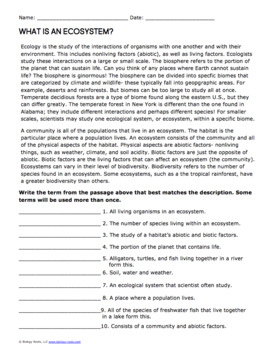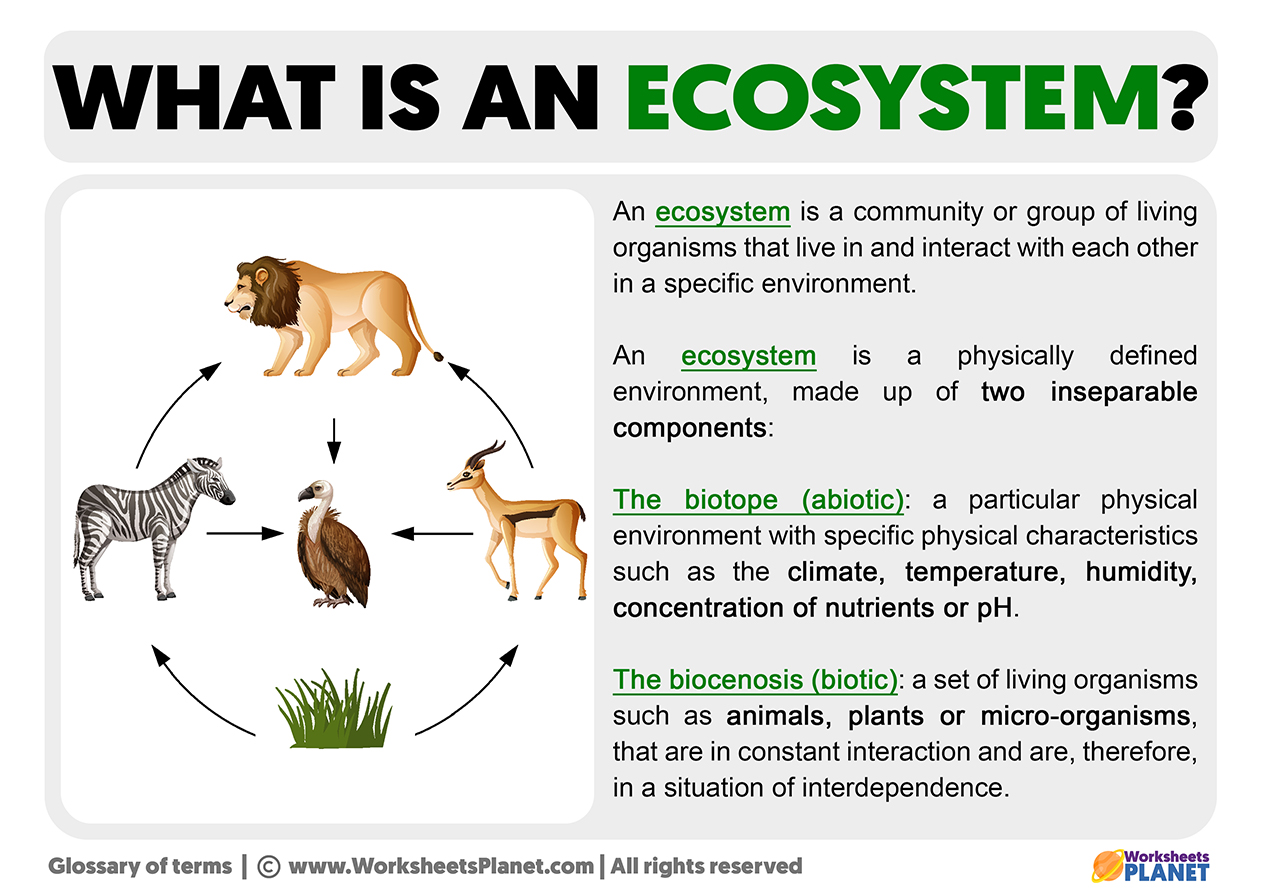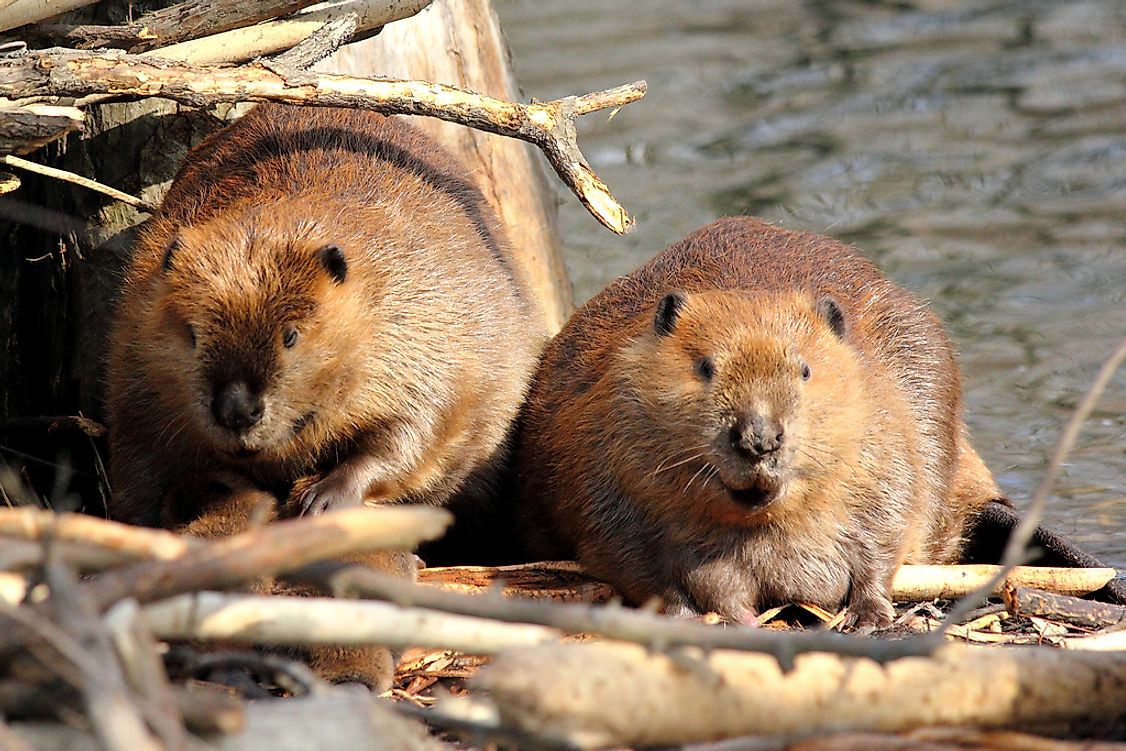Topic definition of ecosystem in geography: Explore the fascinating world of ecosystems in geography, where the intricate relationships between living organisms and their environment paint a dynamic picture of Earth"s biodiversity.
Table of Content
- What is the definition of ecosystem in geography?
- Definition and Importance of Ecosystems
- Types of Ecosystems: Terrestrial, Aquatic, and More
- Components of an Ecosystem: Biotic and Abiotic Elements
- Energy Flow and Nutrient Cycles in Ecosystems
- YOUTUBE: What Are Ecosystems? Crash Course Geography 15
- The Role of Ecosystems in Climate Regulation
- Human Impact on Ecosystems and Conservation Efforts
- Ecosystem Services: Benefits to Humanity
- Case Studies: Ecosystems Around the World
- Challenges in Ecosystem Management and Restoration
- Future Directions in Ecosystem Research
What is the definition of ecosystem in geography?
An ecosystem in geography refers to a geographic area where living organisms, such as plants and animals, interact with each other and with their physical environment. Here is a detailed explanation of the definition of an ecosystem in geography:
- Natural System: An ecosystem is a natural system that includes both biotic (living organisms) and abiotic (non-living) components.
- Interactions: In an ecosystem, organisms interact with each other and with the physical environment through processes like predation, competition, and nutrient cycling.
- Components: The biotic components of an ecosystem include plants, animals, and microorganisms, while the abiotic components include soil, water, air, and climate factors.
- Balance: Ecosystems are characterized by a delicate balance where each organism plays a role in maintaining the overall ecological system.
- Function: Ecosystems provide essential services such as nutrient cycling, pollination, and water purification, which are vital for sustaining life on Earth.
READ MORE:
Definition and Importance of Ecosystems
An ecosystem, in geography, refers to a complex network of living organisms (biotic components) and their physical environment (abiotic components) interacting as a system. These interactions form a unit that supports life, regulates climate, and contributes to the global cycles of nutrients and energy. Ecosystems vary in size and type, encompassing diverse habitats like forests, deserts, coral reefs, and urban areas.
- Biotic Components: Includes all living organisms within the ecosystem, such as plants, animals, bacteria, and fungi, which interact with each other and their environment.
- Abiotic Components: Consists of non-living elements like sunlight, water, air, minerals, and soil that support the living organisms.
Ecosystems play a crucial role in maintaining ecological balance and providing services essential for human survival and well-being. These services include air and water purification, pollination of crops, climate regulation, and carbon sequestration. Understanding ecosystems and their functions is vital for promoting biodiversity conservation and ensuring sustainable development.
- Energy Flow: Ecosystems are dynamic entities where energy flows from the sun through photosynthesis, supporting life and enabling the food web.
- Nutrient Cycling: The recycling of nutrients from the environment through organisms and back into the environment is essential for ecosystem health.
The importance of ecosystems extends beyond their intrinsic ecological value, influencing economic, social, and cultural aspects of human societies. They are the foundation upon which we can build a sustainable future.
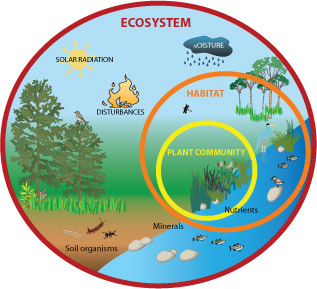
Types of Ecosystems: Terrestrial, Aquatic, and More
Ecosystems are broadly categorized into two main types: terrestrial and aquatic. Each type has unique characteristics and can be further divided into more specific categories based on their environment and the organisms they support.
- Terrestrial Ecosystems: These are land-based ecosystems and include forests, grasslands, deserts, and tundra. They are characterized by the type of vegetation they support, which in turn influences the wildlife found there.
- Aquatic Ecosystems: Found in water environments, they are divided into freshwater (lakes, rivers, and ponds) and marine (oceans, seas, and coral reefs) ecosystems. Each has distinct salinity levels, plant, and animal life.
- Transitional Ecosystems: Such as wetlands, estuaries, and mangroves, these ecosystems are crucial for the biodiversity they support, often acting as nurseries for many marine species.
Understanding the different types of ecosystems is essential for the study of geography as it helps in comprehending the complex interactions between various biotic and abiotic components. These ecosystems play vital roles in the Earth"s ecological balance, supporting a wide range of life forms and processes.
- Forests: Key for carbon sequestration and biodiversity.
- Grasslands: Important for soil preservation and habitat to many species.
- Deserts: Home to unique adaptations of life in harsh conditions.
- Oceans: Crucial for climate regulation and marine biodiversity.
Each ecosystem type, whether terrestrial, aquatic, or transitional, contributes significantly to the planet"s health and human well-being, showcasing the interconnectedness of Earth"s systems.
Components of an Ecosystem: Biotic and Abiotic Elements
Ecosystems are dynamic systems characterized by the interaction of living (biotic) and non-living (abiotic) components. These interactions create a structurally and functionally cohesive unit. Understanding these components is essential for studying ecosystems in geography.
- Biotic Components: These are the living parts of an ecosystem, including plants, animals, fungi, and microorganisms. They play various roles, such as producers, consumers, and decomposers, contributing to the ecosystem"s energy flow and nutrient cycle.
- Abiotic Components: These include the non-living elements of an ecosystem, such as water, air, soil, sunlight, temperature, and nutrients. Abiotic factors determine the types of biotic components that can exist in an ecosystem and influence their distribution and abundance.
Interactions between biotic and abiotic components drive the fundamental processes of ecosystems, including photosynthesis, respiration, and nutrient cycling, which sustain life and maintain ecological balance. For example, sunlight (abiotic) enables plants (biotic) to perform photosynthesis, producing oxygen and food that support other life forms.
- Photosynthesis: Plants convert sunlight into energy, forming the base of the food web.
- Nutrient Cycling: Decomposers break down dead material, returning nutrients to the soil.
- Energy Flow: Energy moves through the ecosystem via the food chain, from producers to consumers.
The balance between biotic and abiotic components is crucial for ecosystem health. Changes in abiotic factors, such as climate change or pollution, can significantly impact ecosystem function and biodiversity.

Energy Flow and Nutrient Cycles in Ecosystems
The sustainability of ecosystems relies on the continuous flow of energy and the recycling of nutrients, ensuring life processes are maintained. Energy flows directionally, typically entering an ecosystem through sunlight and being converted by photosynthesis into chemical energy by producers (plants). This energy then passes through various trophic levels of consumers before being lost as heat. Nutrient cycles, on the other hand, involve the transformation and movement of materials like carbon, nitrogen, and water through biotic and abiotic components of the ecosystem.
- Solar Energy: The primary source of energy for most ecosystems, driving photosynthesis in plants.
- Food Webs: Illustrate how energy is transferred between producers, consumers, and decomposers in an ecosystem.
- Nutrient Recycling: Decomposers break down dead organisms, returning nutrients to the soil, where they can be reused by plants.
Key cycles include:
- The Carbon Cycle: Involves the exchange of carbon among the biosphere, pedosphere, geosphere, hydrosphere, and atmosphere of the Earth.
- The Nitrogen Cycle: Essential for converting nitrogen available in the atmosphere into a form that can be used by living organisms.
- The Water Cycle: Describes the continuous movement of water on, above, and below the surface of the Earth.
These cycles are crucial for ecosystem functionality, supporting a diverse range of life forms and contributing to the stability of environmental systems. Understanding these processes is key to addressing environmental challenges, such as climate change and biodiversity loss.
What Are Ecosystems? Crash Course Geography 15
Dive into the fascinating world of ecosystems, where diverse species coexist in harmony. Explore the interconnected web of life and discover the beauty of nature\'s balance in this captivating video.
What is an Ecosystem? AQA GCSE Geography Ecosystems 1
Are you preparing for the AQA GCSE Geography exam? Look no further! This video offers comprehensive insights, detailed explanations, and valuable tips to help you excel in your studies. Watch now to ace your exam with confidence!
The Role of Ecosystems in Climate Regulation
Ecosystems play a critical role in regulating the Earth"s climate by controlling the concentration of greenhouse gases in the atmosphere, influencing weather patterns, and determining the rate of energy exchange between the earth and the atmosphere. Through processes such as photosynthesis, carbon sequestration, and evapotranspiration, ecosystems not only sustain their local environments but also contribute to global climate stability.
- Photosynthesis: Plants absorb CO2, a major greenhouse gas, and convert it into oxygen and biomass, thus reducing global warming potential.
- Carbon Sequestration: Forests, oceans, and wetlands act as carbon sinks, storing carbon dioxide and playing a key role in mitigating climate change.
- Evapotranspiration: The process by which water is transferred from the land to the atmosphere by evaporation from soil and other surfaces and by transpiration from plants. This affects local and regional temperature and humidity levels.
Moreover, ecosystems like forests and oceans influence local weather conditions and global climate patterns through their impact on the albedo effect (the reflection of solar energy) and the formation of clouds. For instance, the Amazon Rainforest is often referred to as the "lungs of the Earth," illustrating its vast capacity to absorb carbon dioxide and produce oxygen, which is vital for life.
- Albedo Effect: Areas covered with ice or snow reflect more solar radiation than darker surfaces, affecting global temperature.
- Cloud Formation: Forests emit volatile organic compounds that can lead to cloud formation, influencing rainfall and temperature.
The intricate relationship between ecosystems and the climate underscores the importance of conserving and restoring ecosystems to ensure climate stability. This interdependence highlights the need for sustainable management practices that protect ecosystem integrity while addressing the challenges of climate change.
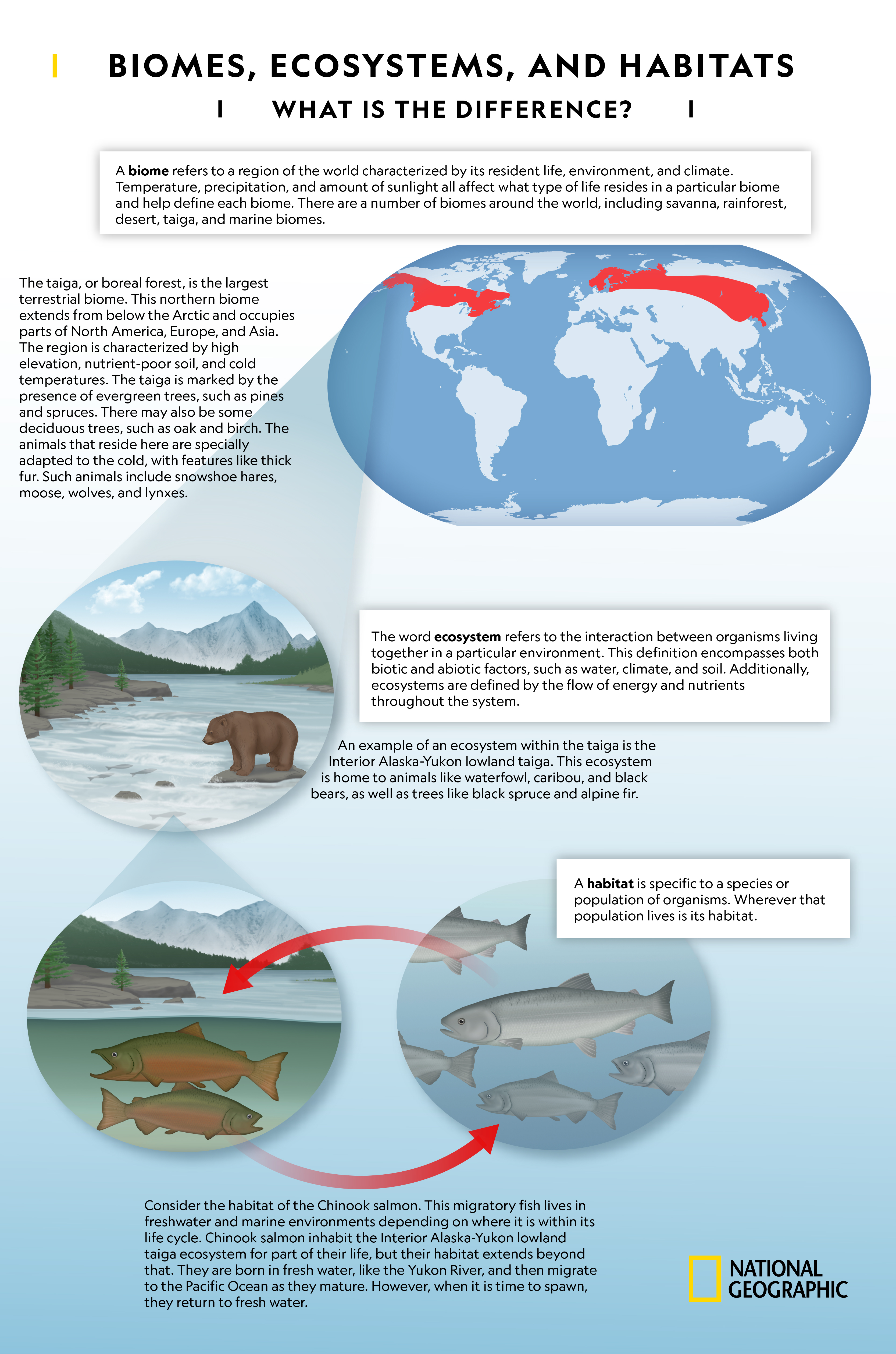
Human Impact on Ecosystems and Conservation Efforts
Human activities have significantly impacted ecosystems worldwide, leading to habitat destruction, pollution, climate change, and biodiversity loss. Understanding these impacts and implementing effective conservation efforts are crucial for the sustainability of ecosystems and the services they provide.
- Habitat Destruction: Deforestation, urbanization, and agriculture contribute to the loss of habitats, threatening species survival.
- Pollution: Air, water, and soil pollution from industrial activities and waste disposal harm organisms and disrupt ecosystem processes.
- Climate Change: Caused by greenhouse gas emissions, climate change affects weather patterns, sea levels, and the distribution of species.
- Overexploitation: The excessive use of natural resources, such as overfishing and hunting, leads to the depletion of biodiversity.
Conservation efforts are essential to mitigate these impacts and ensure the preservation and restoration of ecosystems. These efforts include:
- Protected Areas: Establishing national parks, wildlife reserves, and marine sanctuaries to safeguard habitats and species.
- Restoration Projects: Rehabilitating degraded ecosystems, such as reforestation and wetland restoration, to restore ecological balance.
- Sustainable Practices: Promoting sustainable agriculture, fishing, and forestry practices to reduce environmental footprints.
- Policy and Legislation: Implementing laws and policies that protect ecosystems, regulate pollution, and manage natural resources sustainably.
The collective action of individuals, communities, and governments is vital for the conservation of ecosystems. By understanding the value of ecosystems and the threats they face, we can work towards a more sustainable and environmentally responsible future.
Ecosystem Services: Benefits to Humanity
Ecosystem services are the many and varied benefits that humans freely gain from the natural environment and from properly-functioning ecosystems. Such services include natural processes like the purification of air and water, pollination of plants, decomposition of waste, and regulation of the climate. These services are critical for human survival and well-being, supporting agriculture, forestry, fisheries, and non-material benefits such as recreational and cultural advantages.
- Provisioning Services: These include the supply of food, fresh water, wood, fiber, and genetic resources.
- Regulating Services: Ecosystems regulate climate, floods, disease, wastes, and water quality among other things.
- Supporting Services: These are necessary for the production of all other ecosystem services, such as biomass production, production of oxygen, soil formation and retention, nutrient cycling, and water cycling.
- Cultural Services: These include spiritual and recreational benefits, tourism, and aesthetic enjoyment, enriching human culture and fostering well-being.
The recognition and preservation of ecosystem services is a vital aspect of environmental conservation efforts. Protecting ecosystems ensures the continued delivery of these services, which is essential for sustainable development and for maintaining a stable and healthy environment. Efforts to conserve ecosystems and their services include establishing protected areas, implementing sustainable management practices, and restoring degraded ecosystems.
- Conservation and Sustainable Use: Balancing human needs with the preservation of ecosystems to ensure long-term sustainability.
- Environmental Education: Raising awareness about the importance of ecosystem services and the need for conservation.
- Policy and Regulation: Developing policies that protect ecosystems and promote the sustainable use of natural resources.
By valuing and protecting ecosystem services, humanity can ensure the health of the planet and the well-being of future generations.

Case Studies: Ecosystems Around the World
Ecosystems around the world vary greatly in their complexity, biodiversity, and the unique roles they play within the global environment. Highlighting specific case studies helps illustrate the diversity of ecosystems, their functions, and the challenges they face.
- The Amazon Rainforest: Often referred to as the "lungs of the Earth," this vast tropical rainforest plays a crucial role in carbon dioxide absorption and oxygen production, housing an immense variety of plant and animal species.
- The Great Barrier Reef: The world"s largest coral reef system, located off the coast of Australia, supports a wide range of marine life. It is critical for biodiversity but faces threats from climate change, pollution, and overfishing.
- The Sahara Desert: The largest hot desert in the world, illustrating how ecosystems adapt to extreme dry conditions. It supports a variety of life forms that have adapted to the harsh environment.
- The Arctic Tundra: Characterized by cold temperatures, permafrost, and minimal vegetation, the tundra supports unique species adapted to its conditions but is vulnerable to the effects of global warming.
These case studies show the importance of protecting ecosystems from threats such as climate change, habitat destruction, and pollution. Conservation efforts and sustainable management practices are essential to preserve these ecosystems for future generations.
- Conservation Strategies: Implementing measures to protect and restore ecosystems.
- Sustainable Practices: Encouraging the sustainable use of resources to minimize human impact.
- Global Cooperation: Working together on an international level to address environmental challenges.
Studying these ecosystems provides valuable insights into the complexity of natural environments and highlights the need for concerted conservation efforts worldwide.
Challenges in Ecosystem Management and Restoration
Ecosystem management and restoration are critical for maintaining biodiversity, supporting ecosystem services, and mitigating the impacts of climate change. However, these efforts face numerous challenges that can complicate conservation objectives.
- Climate Change: Altering temperature and precipitation patterns can shift ecosystems faster than species can adapt or migrate, leading to biodiversity loss.
- Invasive Species: Non-native species can outcompete, prey on, or bring diseases to native species, disrupting ecosystem balance.
- Habitat Fragmentation: Human activities like urbanization and agriculture divide ecosystems into smaller, isolated patches, impairing species migration and genetic exchange.
- Pollution: Contaminants from industrial, agricultural, and urban sources can degrade water, soil, and air quality, affecting both biotic and abiotic components of ecosystems.
Efforts to overcome these challenges include:
- Implementing integrated management practices that consider ecological, social, and economic factors.
- Restoring habitats to their natural states through reforestation, wetland restoration, and the removal of invasive species.
- Adopting conservation strategies that enhance ecosystem resilience to climate change.
- Promoting sustainable land-use practices to reduce habitat fragmentation and pollution.
Collaboration among governments, NGOs, scientists, and local communities is essential to address these challenges effectively. By prioritizing ecosystem health and integrity, we can ensure the preservation of biodiversity and the continued provision of essential ecosystem services.
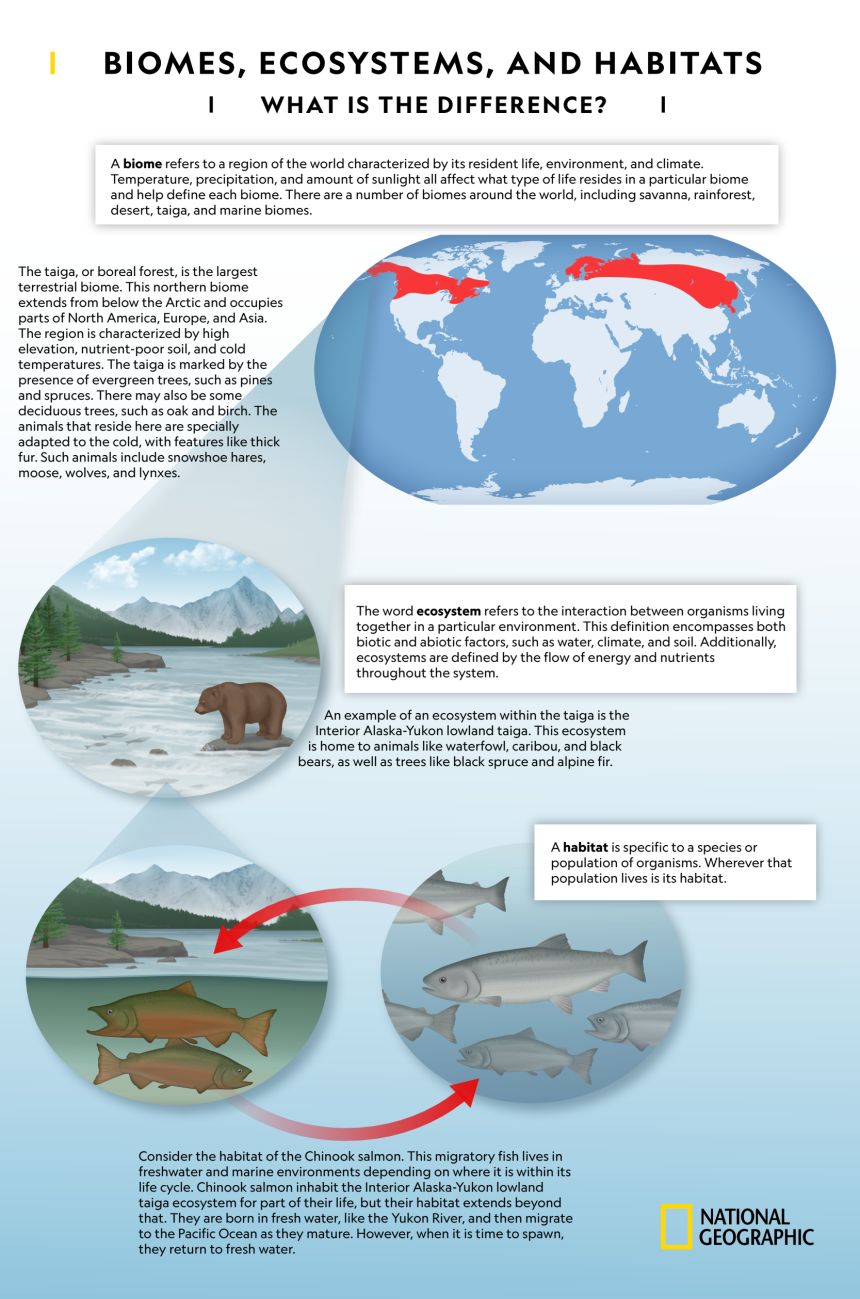
READ MORE:
Future Directions in Ecosystem Research
As our understanding of ecosystems deepens, future research directions aim to address the complex challenges facing global biodiversity and ecological sustainability. Innovations in technology, interdisciplinary approaches, and increased emphasis on conservation and restoration practices are shaping the next frontier of ecosystem research.
- Climate Change Impact Assessments: Evaluating how ecosystems can adapt to climate change, mitigating negative impacts, and enhancing resilience.
- Technological Advancements: Utilizing remote sensing, GIS, and big data analytics to monitor ecosystems and biodiversity on a global scale.
- Restoration Ecology: Developing more effective methods for restoring degraded ecosystems, including reforestation, wetland restoration, and coral reef rehabilitation.
- Integrated Ecosystem Management: Promoting holistic approaches that incorporate ecological, social, and economic considerations for sustainable management.
Interdisciplinary collaborations between ecologists, geographers, climate scientists, and social scientists are critical for addressing the multifaceted challenges ecosystems face. Future research will also focus on the valuation of ecosystem services, ensuring that the benefits ecosystems provide to humanity are recognized and preserved.
- Biodiversity Conservation: Prioritizing the protection of endangered species and habitats through global conservation initiatives.
- Ecosystem Services: Further quantifying the economic and social benefits of ecosystem services to support conservation policies.
- Community-based Conservation: Engaging local communities in conservation efforts, recognizing their role as stewards of the environment.
The future of ecosystem research is geared towards creating sustainable solutions that balance human needs with ecological health, ensuring a resilient and biodiverse planet for future generations.
Exploring ecosystems in geography unveils the intricate balance of life on Earth, highlighting the critical need for conservation and sustainable management to ensure a thriving planet for future generations.



